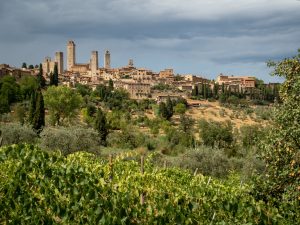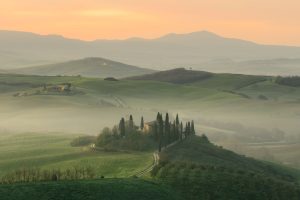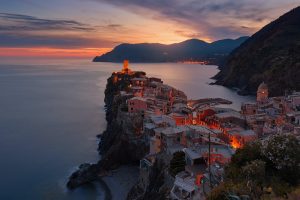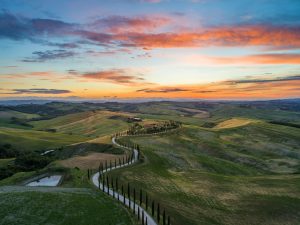Italy is a country that’s steeped in history, culture, and natural beauty. Its landscape has been the subject of countless paintings over the centuries, capturing the rolling hills, picturesque vineyards, and serene coastlines. From the famous works of Michelangelo and Da Vinci to the lesser-known but equally captivating pieces of artists such as Caravaggio and Titian, Italian landscape paintings are a true testament to the country’s timeless charm.
One of the most iconic paintings of Italy’s landscape is Leonardo da Vinci’s “The Mona Lisa.” While the portrait is of a woman, the background showcases a landscape that is characteristic of the Italian countryside. The rolling hills, lush greenery, and winding roads provide a tranquil backdrop to the enigmatic smile of the subject. However, da Vinci’s paintings of landscapes were not limited to the background of his portraits. In his later years, he created a series of landscape paintings that showcased his mastery of perspective and depth, as seen in works like “The Adoration of the Magi” and “The Virgin and Child with Saint Anne.”

Another notable artist who captured the essence of Italy’s landscapes was Caravaggio. His paintings, such as “The Calling of St. Matthew” and “The Crucifixion of St. Peter,” depicted the dramatic landscapes of Rome with a bold, dramatic style that emphasized light and shadow. Caravaggio’s paintings were revolutionary in their time, as they broke away from the traditional styles of his contemporaries.

Italian landscapes also inspired the works of Titian, who was known for his use of color and light in his paintings. His famous piece, “The Bacchus and Ariadne,” showcased the vibrant colors of the Italian countryside, with a beautiful coastline in the background. Titian’s paintings were a true celebration of the beauty of Italy, and his style influenced many artists in the centuries that followed.

In addition to these famous painters, there were many other Italian artists who captured the landscapes of their country in their works. One such artist was Giovanni Bellini, who was known for his breathtaking landscapes of Venice. His use of light and color created a unique sense of atmosphere in his paintings, such as in “The Feast of the Gods” and “The St. Francis in Ecstasy.”
Another lesser-known but equally talented painter was Guido Reni, who specialized in landscape paintings of the Italian countryside. His works, such as “The Flight into Egypt” and “The Holy Family,” showcased the rolling hills and verdant fields of Italy with a serene and peaceful style.
Italian landscape paintings also served as a source of inspiration for many artists from other countries. J.M.W. Turner, a British painter, was deeply influenced by the landscapes of Italy and incorporated their essence into his works. His paintings, such as “The Bay of Baiae” and “Lake Avernus,” showcased the beauty of the Italian coastline and the mesmerizing colors of the sky and water.
In conclusion, the paintings of Italy’s landscapes are a testament to the country’s enduring charm and natural beauty. From the rolling hills of Tuscany to the dramatic coastline of the Amalfi Coast, Italy’s landscapes have inspired some of the greatest painters in history. While each artist has their unique style and approach, they all share a common appreciation for the timeless beauty of Italy’s landscape. Whether you’re an art enthusiast or a nature lover, the paintings of Italy’s landscapes are sure to captivate and inspire you.

Trivia: The famous Italian landscape painter, Giovanni Bellini, was also a master of portraiture. One of his most famous portraits is that of Doge Leonardo Loredan, which is now displayed in the National Gallery in London.
